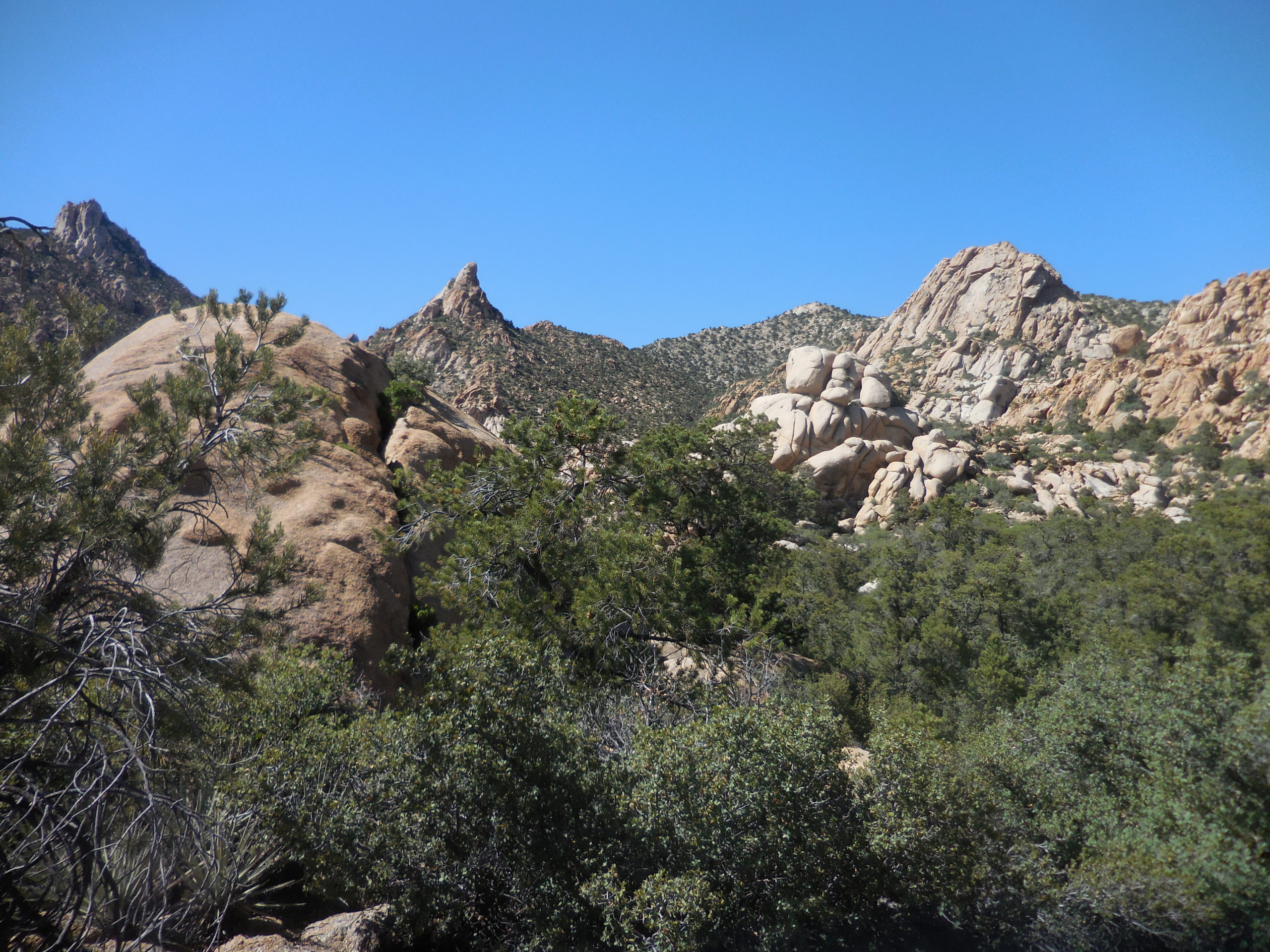Deep in the New York Mountains, in the heart of Mojave National Preserve, a hiker who knows plants may find a surprise: shrubs like yerba santa (Eriodictyon californicum) and California lilacs (Ceanothus), best known from the coastal chaparral of the Santa Monica Mountains, growing in one of the remotest parts of the Mojave Desert.
This community is a “disjunct”, a relic of a time thousands of years ago, when the Southwest was cooler and wetter, and chaparral plants could find suitable habitat from the Pacific coast all the way inland to Arizona. As the climate warmed and grew drier, patches of chaparral-suitable conditions remained at high-elevation spots like the New York Mountains. Shane Jordan, a Master’s student working with CSUN Professor of Biology Paula Schiffman, has been surveying the disjunct community of the New York Mountains, and last week he presented preliminary results at the 2022 Desert Symposium at Copper Mountain College in Joshua Tree, California.
Jordan’s talk, “Disjunct chaparral relicts in the New York Mountains of Mojave National Preserve: a preliminary survey” reported his comparisons of the New York Mountains disjunct chaparral to plant communities back near the coast, in the mountains north of Los Angeles. He finds, so far, that differences between the New York Mountains disjunct community and the more coastal chaparral are mainly driven by the presence of trees and shrubs associated with high-elevation woodland.
Featured image: A view of the New York Mountains shrubland at one of Jordan’s study sites. (Shane Jordan)

